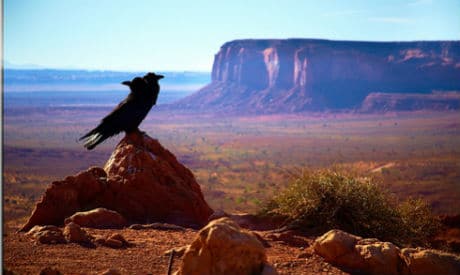
What do a high society girl, the father of Permaculture and Dr. Frankenstein all have in common? They all practice the art of resurrection.
The principles of restoring our landscape are simple, ancient and basic. In a recent article published in Oprah Magazine titled “The Promised Land” by Kathy Dobie, we meet an unlikely hero named Valer Austin. In a riveting piece, Kathy describes how this city girl, now 72, spent the last 12 years of her life reviving a 1,920-acre ranch in Sonora, Mexico. Valer brought no knowledge of land restoration, biology or science to the seemingly helpless situation yet she and her husband quickly deduced the root of the problem, rolled up their sleeves and started digging in, literally.
The Austin’s dusty ranch had spent the better part of the last 100 years as a barren wasteland. The continuous overgrazing of cattle, abuse of the local forests by mining operations and drainage of the wetlands by overzealous farmers had sucked the land dry of every life-sustaining gift it had once offered in abundance. Many local animal species had gone extinct and, upon first glance, Valer wondered aloud at what the cows could possibly be grazing on.
It was an experiment turned epic journey when Valer’s husband Josiah decided to build a couple of small dams, known locally as trincheras, to try and slow down the monsoon rains that cut through the harsh landscape, rushing so fast from the mountains that it never slowed down to deposit its rich silts, leaving the land more eroded and parched than the season before.
The little dams soon showed evidence of their effectiveness and each began to collect a bit of silt which in turn sprouted grass and eventually began to hold small amounts of water. Spurred by this small success the couple rounded up a team of locals and, armed with the knowledge of their forefathers in the ways of water retention, got to work.
It would take a lot of digging and another kind of specialized dam called a gabion to cause the effect they were looking for. The wisdom behind both types of dams lies in their ability to let the water pass through them slowly but not stop the flow completely. Conventional dams block all water at the cost of stagnating moving water and causing more erosion downstream. These little beauties slowed the water just enough to encourage silt deposits and saturation of the earth without disrupting the natural balance of the ecosystem.
The Austins worked day and night, pockmarking the area from mountain to field with their water-slowing structures. They eventually stopped counting when they reached 20,000 dams. A mere 12 years later, the once-useless ranch now teems with life and attracts scientists that wish to study the wildlife that has moved in since the resurrection. The ranch will probably never be a desert wetland again but thanks to Valer’s persistence in managing the water crisis, there is again beauty where there was destruction.
A theme begins to emerge as we look at another pioneer of water and environment expert Bill Mollison. This determined Aussie is dubbed the father of Permaculture; a branch of agriculture dedicated to a more permanent type of agriculture, hence the name.
As with Valer, Bill discovered early on the importance of slowing down water and preserving it in the greatest natural reservoir known to man, the earth itself. In a video titled “The Importance of Water Retention,” Bill explains how the landscape is the largest water storage we can use. He goes on to explain that conventional dams only hold 15% of rainwater before the rest runs off while the video shows images of a swale, a trench dug into the side of a hill for purposes of retaining rainwater, as it slowly captures water and forces it underground.
The secret all stems from moving water slowly through the earth, making it available to the plants that depend on it. Bill explains that it takes between 15 and 30 years for groundwater to reach the rivers and streams, all the while creeping just below the surface, supporting everything growing above and preventing drought.
Armed with this knowledge it becomes hard to understand why we still have water issues, dead pan soil and drought throughout the world. It is even harder to understand why Gary Harrington, a 64-year-old property owner in Oregon spent 30 days in jail for collecting his own rainwater and was fined multiple times for his “violation.”
At a time where restoring our land and preserving our water is of dire importance we see regular people begin to take the form of leaders and even face persecution for their efforts. It is in these actions that lines are drawn and steps are taken to shape our collective future. Hats off to those that follow their hearts and share the restorative power of water with us all.
Stephanie Monty is a freelance writer that works with Ward Water, a water purification company, that operates out of the state of Maine. Ward water specializes in Maine water containment removal using nano filtration systems and absorptive Media Resins.
Photo credit: Moyan Brenn




